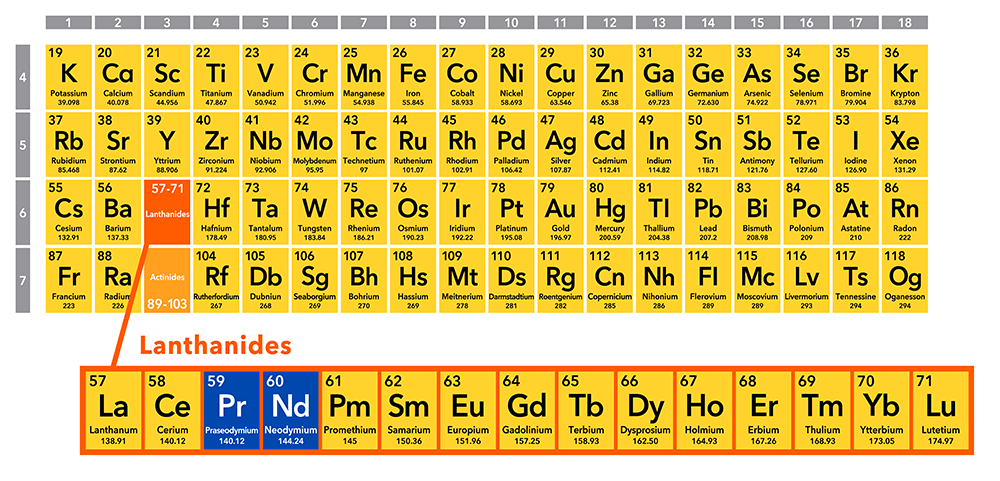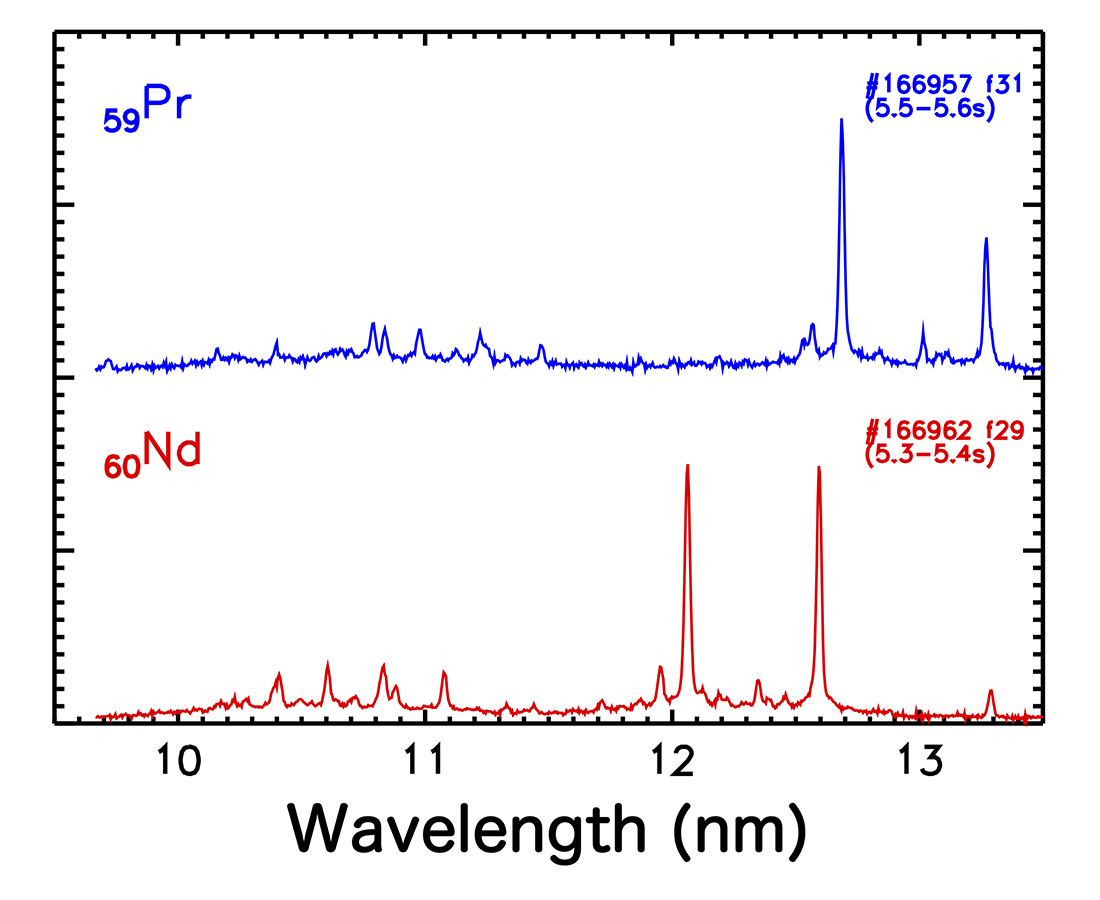Spectral line identifications of highly charged praseodymium and neodymium ions in LHD
We analyzed extreme ultraviolet emission spectra of highly charged praseodymium and neodymium ions introduced into high-temperature plasmas produced in the Large Helical Device (LHD). Based on the recently published list of lines of neodymium ions in an electron beam ion trap (EBIT) experiment, spectral lines of praseodymium ions were identified as well from the similarity of the spectral features of both the elements. Some of them have been identified experimentally for the first time in LHD.


We analyzed extreme ultraviolet emission spectra of highly charged praseodymium and neodymium ions, introduced into high-temperature plasmas, produced in the Large Helical Device (LHD). Based on a recently published list of lines of neodymium ions in an electron beam ion trap (EBIT) experiment, spectral lines of praseodymium ions were identified as well from the similarity of the spectral features of both the elements. Some of them have been identified experimentally for the first time in the LHD.
Fifteen elements with atomic numbers of 57-71, called lanthanides, have a similar nature to each other. When such heavy elements are injected into a high-temperature plasma, many electrons are stripped from the atoms, then highly charged ions are produced. Regarding the emission spectra from highly charged lanthanide ions, available experimental data are extremely limited for some of the elements, and the spectral databases of the emission lines are still insufficient.
The Large Helical Device (LHD) has been exploited for producing spectral data of highly charged heavy ions because high-temperature and high-emissivity plasmas can be stably generated. And besides, impurity injection systems and advanced diagnostic systems are available in the LHD. Systematic observations of lanthanide elements have already been performed in the LHD. In this study, we focus on the analysis of extreme ultraviolet (EUV) emission spectra of highly charged praseodymium (Pr) and neodymium (Nd) ions, the atomic numbers of which are 59 and 60, respectively.
Under usual plasma conditions in the LHD, EUV spectra of highly charged lanthanide ions have complicated quasi-continuum features composed of a huge number of lines in lower temperature plasmas. On the other hand, discrete spectral features, composed of a smaller number of isolated lines, are observed in higher temperature plasmas because higher ion stages having simple electron configurations become dominant. Such simple spectra in high-temperature plasmas were analyzed in this study as a first step.
Spectroscopic studies on highly charged heavy ions are carried out also in other experimental facilities, called an electron beam ion trap (EBIT). Charge-separated spectra can be obtained in EBITs by controlling electron beam energies. Recently, a result of line identifications of highly charged Nd ions has been reported, based on an EBIT experiment at the National Institute of Standards and Technology (NIST). Comparing the EBIT data with the LHD data, we have successfully made assignments of 14 lines corresponding to the transitions of three different Nd ion stages.
Though the emission spectra of lanthanides have a similar structure to each other, this common feature shifts to shorter wavelengths as the atomic number increases. Based on this nature, spectral lines corresponding to the same transitions of the same ion stages could be easily identified and also for Pr ions, the EBIT data of which is unavailable. We could newly identify four additional lines in the LHD in comparison with previous studies performed at the TEXT tokamak more than 30 years ago. Furthermore, we could obtain more accurate values of wavelengths for the lines already identified in the TEXT. The present results can be used as fundamental data for the entire analysis of the atomic number dependence of the EUV spectra including other elements, which may lead to further identifications of new lines.
This study has been carried out by C. Suzuki, I. Murakami, et al. (NIFS), in collaboration with F. Koike (Sophia Univ.).
This research result was published on July 14, 2021 in Atoms, an international open-access journal on all aspects of the atom.
